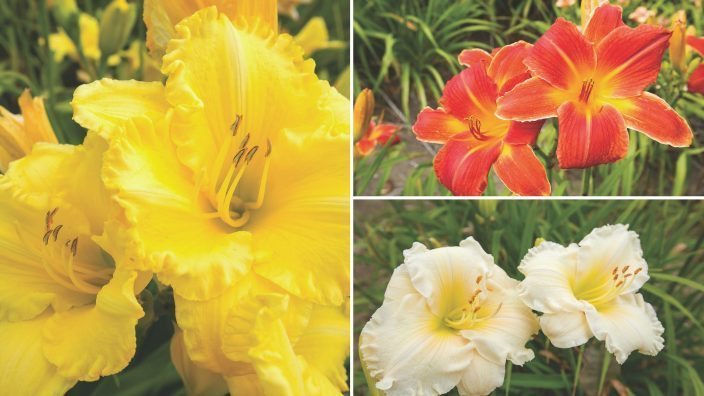Farmer’s Guide to Trucking Regulations available to Ohio Farm Bureau members
The guide includes a farm driver checklist, overview of state and federal regulations and exemptions, CDL qualifications and more.
Read More
No matter how much Beth Veldey loves a type of daylily, she would never purchase multiples of it.
I would never buy two of the same kind,” said the president of the Metropolitan Columbus Daylily Society. “Who would ever do that when there are so many varieties to choose from?”
Veldey, an avid gardener who lives in Lewis Center, loves planting daylilies in her yard because of the amazing variety of choices available. Daylilies, so named because each flower on the plant only lasts one day, come in a wide array of colors, shapes and sizes. In fact, there are thousands of named varieties – many created by Ohio-based hybridizers.
About 250 varieties are represented in Veldey’s garden. She finds new cultivars through her membership in the American Hemerocallis Society, by visiting hybridizer’s websites and attending daylily shows and events. Plants range in price from $5 to $200 with newer varieties fetching the most money.
The plant pollinates easily, making it possible for enthusiasts to create their own varieties, said Montgomery County Farm Bureau member Doug Sterling, who has been hybridizing daylilies for 20 years.
There’s no rule book,” said Sterling, a partner at Pleasant Valley Gardens in Dayton. “You do what you like. Sometimes you get lucky. Most of the time you don’t.”
He normally registers about 26 new plants a year with the AHS, which sets the guidelines for the process. Sterling enjoys trying to create daylilies with ruffled or spiky edges. Other hybridizers focus on creating colored edges, extra petals, patterns or other traits.
One of the best parts is coming up with the names,” said Sterling, creator of “Armed to the Teeth” and “Interview with a Vampire.”
Daylilies are not only easy to hybridize, but they also are easy to grow, gardeners say. The plants are so maintenance-free that AHS has dubbed them the “perfect perennial.”
The nickname is well earned because of the daylily’s ability to survive with little care, said Bill Collins, director of horticulture at Kingwood Center in Mansfield. The plants will adapt to various light and soil conditions, have a long blooming season and work in a variety of landscaping projects. In addition to featuring the plants in a daylily garden, Kingwood uses them throughout the property, Collins said. The center has a mix of early, mid and late bloomers, meaning visitors can enjoy daylilies from mid-June to mid-August.
I think every perennial garden should have them,” he said. “They are a reliable plant that produces a lot of color during the summer.”
Although it’s possible to plant them in summer or fall, spring is the ideal time, Sterling said. “They are very easy to plant. It’s no fuss,” he said. “Just make sure you dig a big enough hole so the roots can spread out.”
The main requirement is sun, Veldey adds.
They’re easy to take care of. Daylilies will even survive dry seasons. They just won’t bloom as well,” she said. “Anybody can grow them as long as they have sun. Sun is major.”
Daylily variety sampling
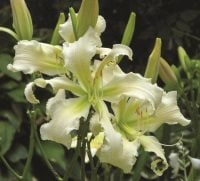 Heavenly Angel Ice
Heavenly Angel Ice
Crispate – Pinching or twisting of the petals or sepals.
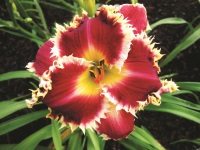 Green Revolution
Green Revolution
Green throated – The same genes that produce a green throat also seem to enhance the other colors.
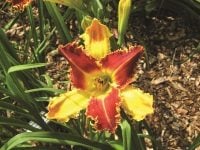 Black Horns
Black Horns
Teeth – Projections on the edge that are pointed and may be curved like claws.
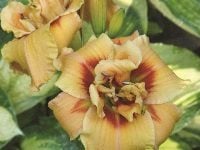 Topguns Metha Scott
Topguns Metha Scott
Double – Flower has an extra set of petals or stamens.
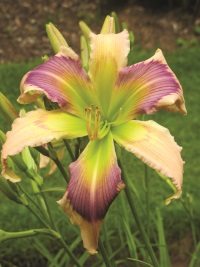 Navajo Pony
Navajo Pony
Cascade – When the curls are long and spiral down like a water fall.
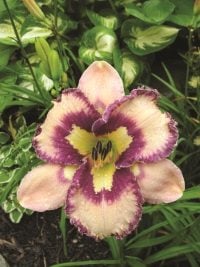 New Destiny
New Destiny
Applique – An opaque color pattern that appears to have been painted on the throat and petals.
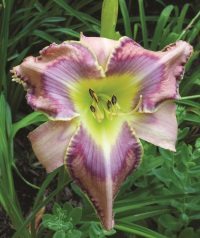 Birdwalk Picotee
Birdwalk Picotee
An edge color that is different than the flower’s base color. This daylily has three distinct edge colors: gold, lavender, and pink.
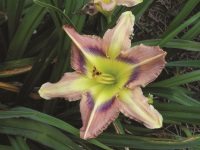 Butterflies are Free
Butterflies are Free
Patterns – Variations in hue, value or saturation of the base color that create a pattern.
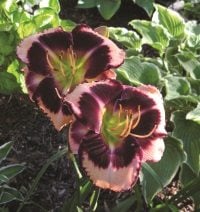 Thomas Tew
Thomas Tew
Eyezone – A darker colored zone on the petal and sepals of the flower just above the throat.
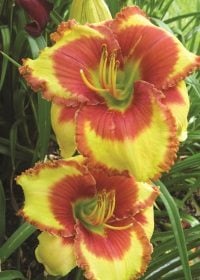 Tropical Pirate
Tropical Pirate
This one is included just for its brilliant color. It has an eye zone and ruffled picotee edging.
Things to Consider When Buying Daylilies:
Size – Plants will produce flowers ranging from miniature (less than 3 inches in diameter) to large (4.5 inches in diameter or bigger).
Height – The height of the scape or stalk of the plant can range between 6 inches to more than 3 feet.
Blooming sequence – Bloom times range from late May to September depending on the variety and where it’s planted.
Lucas County Farm Bureau member Wade Smith, owner of Whitehouse Daylily Farm, is offering Farm Bureau members 10 percent off both farm and online purchases from June through August. Whitehouse Daylily Farm flowers are featured in the feature image with this story.
Photos by Dave Liggett and Beth Veldey


The guide includes a farm driver checklist, overview of state and federal regulations and exemptions, CDL qualifications and more.
Read More


The Small-Scale Food Business Guide covers federal and state regulations for selling food products such as raw meat, dairy, eggs, baked goods, cottage foods, fruits and vegetables, honey and more.
Read More

ODA will enroll 500,000 acres into the program for a two-week sign-up period, beginning April 22, 2024, through May 6, 2024. Contact local SWCD offices to apply.
Read More

Katie Share of Columbus has been named ExploreAg and Youth Development Specialist for Ohio Farm Bureau.
Read More

Mary Klopfenstein of Delphos has been named Young Ag Professional and Ag Literacy Program Specialist for Ohio Farm Bureau.
Read More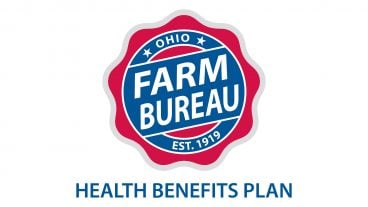
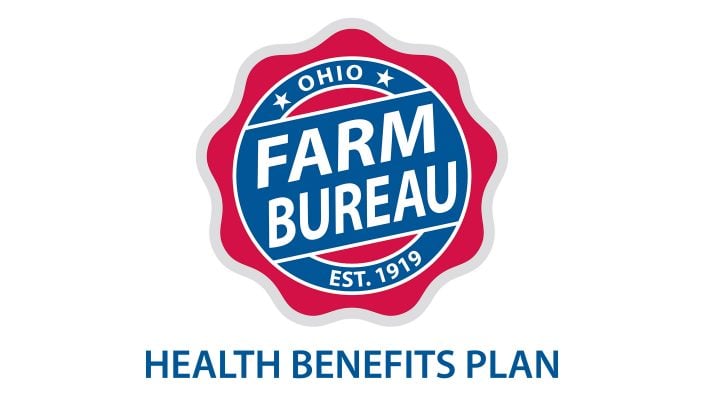
The plan has been updated to give sole proprietors access to more rate stability and a smart solution that offers potential savings on health care.
Read More

The American Farm Bureau Federation, in partnership with Farm Credit, is seeking entrepreneurs to apply online by June 15 for the 2025 Farm Bureau Ag Innovation Challenge.
Read More

Adele Flynn of Wellington has been elected treasurer of the Ohio Farm Bureau Federation and now holds the third highest elected office in Ohio’s largest and most influential farm organization.
Read More
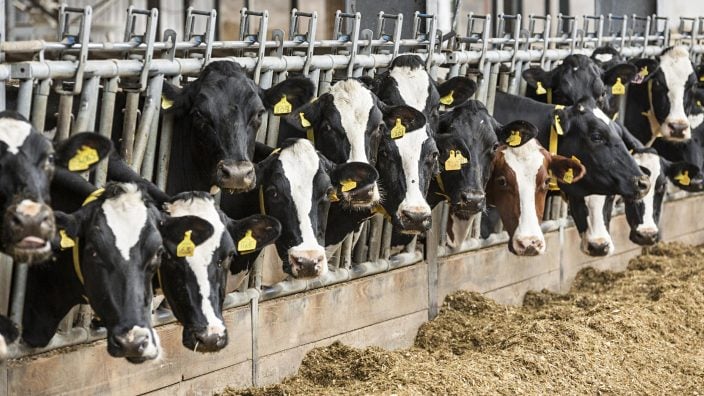
Producers are urged to work with their veterinarian to practice enhanced biosecurity measures and review and limit cattle movements within production systems.
Read More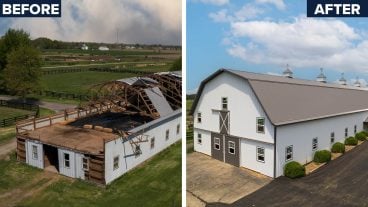
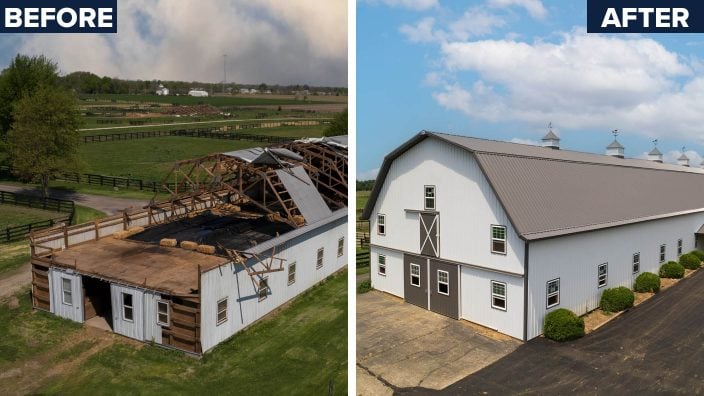
The changing seasons bring with them the need to thoroughly inspect pole barns for any damages that may have occurred during the winter months.
Read More